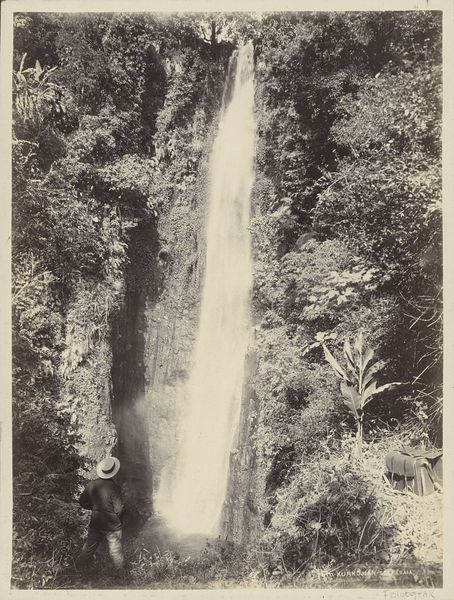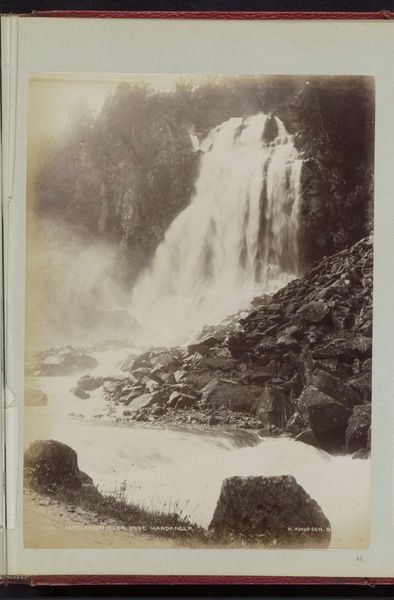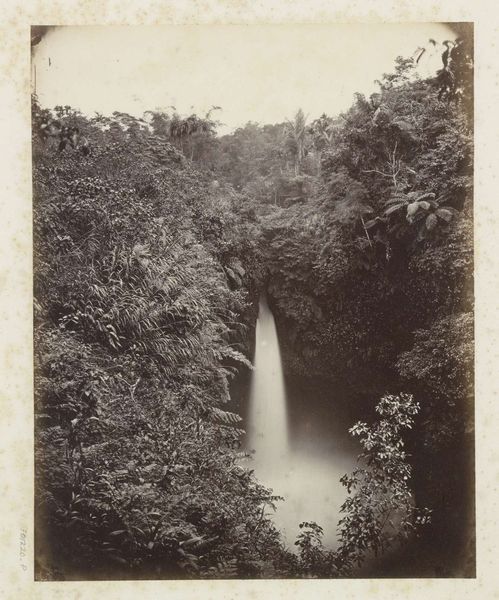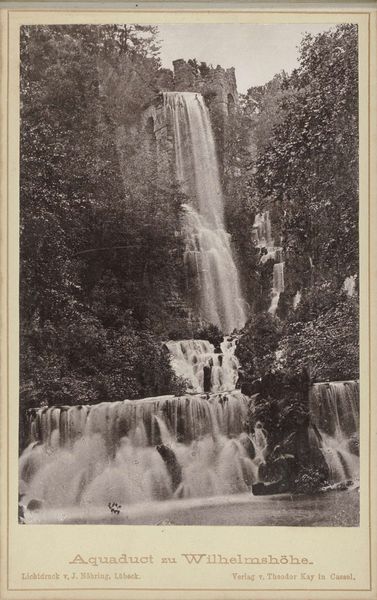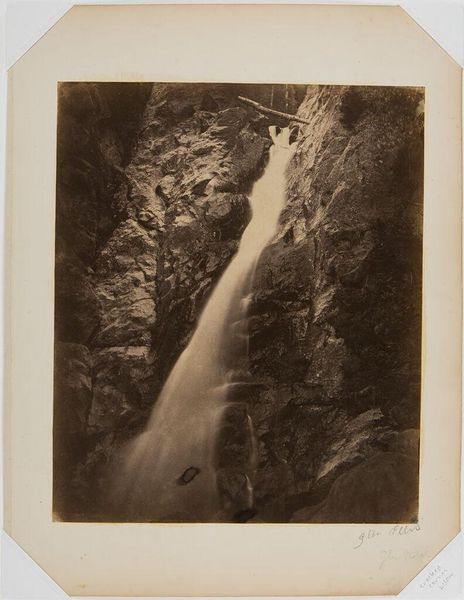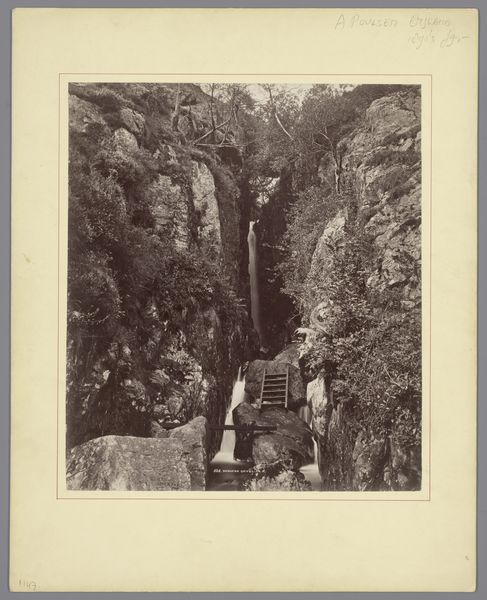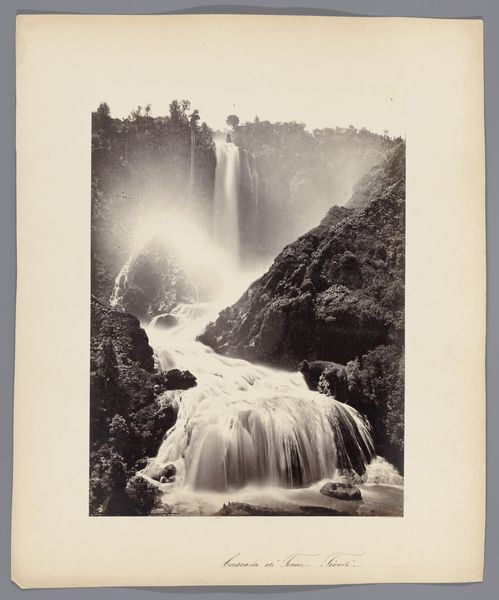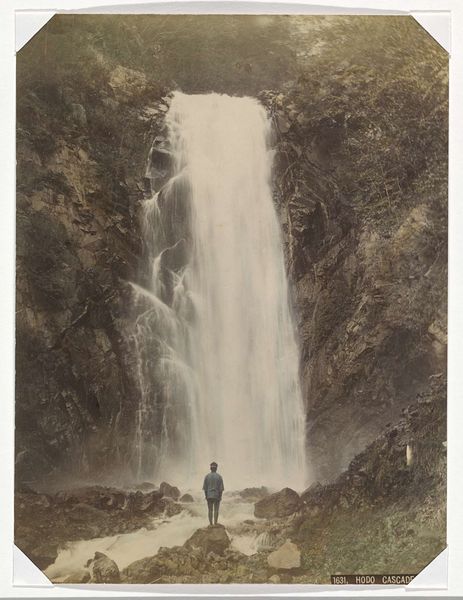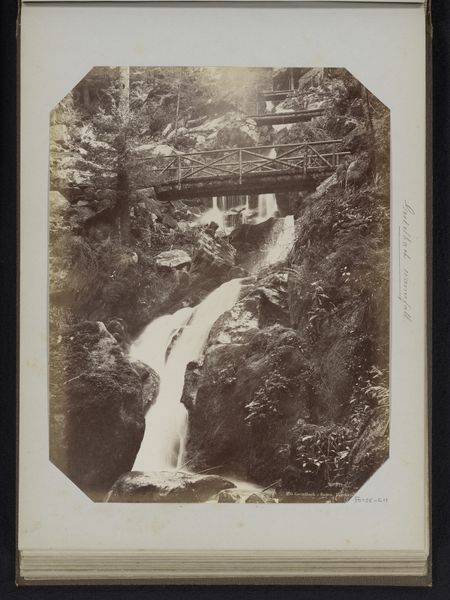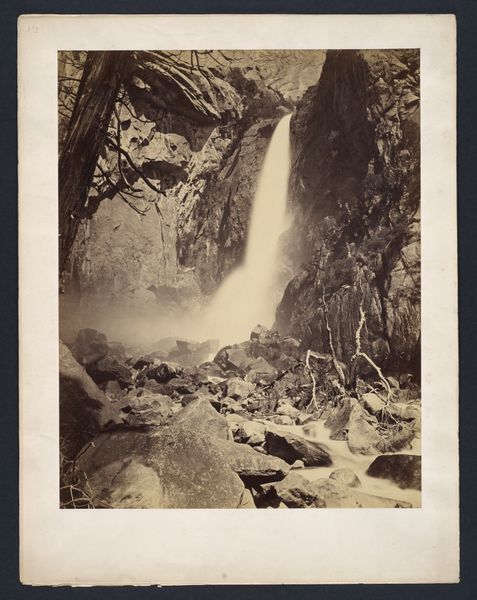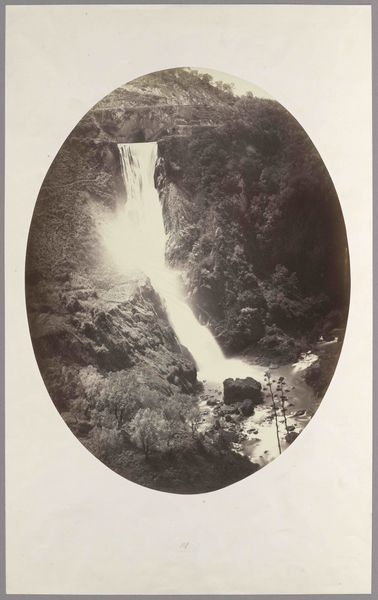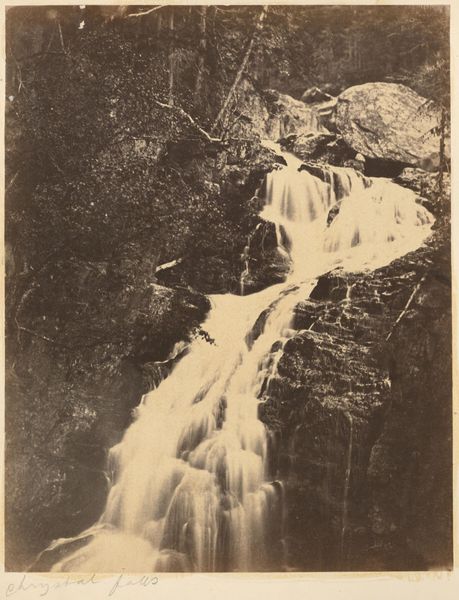
photography, gelatin-silver-print
#
landscape
#
photography
#
gelatin-silver-print
#
realism
Dimensions: height 160 mm, width 107 mm
Copyright: Rijks Museum: Open Domain
Editor: This is "Wandelaars bij de Cascade du Dard bij Chamonix" by Auguste Garcin, a gelatin-silver print made before 1880. I’m immediately struck by how the figures in the foreground are dwarfed by the immensity of the waterfall. What is most significant about this work in the context of art history? Curator: It’s fascinating to consider how images like these shaped the 19th-century experience of nature. Tourism was becoming more accessible, and photography offered a powerful way to both document and promote these destinations. Consider how this photograph, reproduced and circulated, might have influenced ideas about the sublime. What is the relationship, here, between the individual and nature? Editor: I suppose it presents nature as something grand and powerful but also safe enough to visit. The presence of the travelers suggests access. They appear more like spectators than people who are challenging themselves against the elements, so the image feels constructed for them to admire what lies beyond their everyday world. Curator: Precisely. Think about the rise of the illustrated press and travel guides at this time. Photography played a crucial role in shaping perceptions, creating a visual archive of desirable destinations and, consequently, influencing tourism. Was Garcin just documenting the falls, or actively participating in this construction of place and its experience? Editor: So, this image, seemingly just a snapshot of nature, actually has a very specific social and commercial purpose. It’s not just about the waterfall; it’s about selling an experience and making such natural wonders more accessible to all viewers. Curator: Exactly. Understanding the photograph in this context allows us to appreciate the public role of art and the complex interplay between art, commerce, and the developing tourist industry. Editor: It’s so interesting how what appears to be a straightforward landscape is, in reality, a window into the changing dynamics of leisure and representation in the 19th century. Curator: Indeed, looking at art through a social lens deepens our comprehension beyond mere aesthetics.
Comments
No comments
Be the first to comment and join the conversation on the ultimate creative platform.

